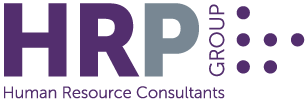We enjoyed this recent article written by Dr. Pak, Assistant Professor in HRM, Trinity College, Dublin
The Economist Intelligence Unit has recently published an article entitled Closing the gap: Designing and delivering a strategy that works based upon a global survey of 500 senior executives. Apparently, companies are experiencing a hard time bridging the gap between strategic human resource management and operation. Almost all the respondents from the survey pinpointed implementation failure as a major obstacle to hitting their strategic targets.
Strategy per se does not move a company forward. The implementation of a strategic plan does. If so, the success of business is not necessarily dependent upon the degree of sophistication in a strategic initiative but a function of how effectively the plan is executed throughout the organization. That said, what drives the delivery of strategy? At the core of implementation is a human problem. In whatever functional area, it’s people who get the job done. In this sense, a process of strategy implementation is, to a large extent, synonymous with managing human resources. The execution of strategy is, in principle, a HR process.
Evidently, a crucial function of HRM is often misunderstood. HRM is not really about processing payrolls and performing other administrative tasks. But, it stands at the forefront of strategy execution by systematically linking every employee’s attitude and behavior to striving toward strategic goals of the organization. How can strategy bear fruit if employee efforts are decoupled from what needs to be done? Thus, ineffective HRM is a prelude to failure in strategy. Indeed, anecdotal evidence from my recent qualitative study provided that in reality HRM receives way less attention than it deserves. Often, HR-related initiatives are viewed as a matter of adoption. In many observations, the modus-operandi, or implementation, falls off the radar, and the phenomena manifest in the discrepancy between espoused and actual HR practices, or what I call the HRM gap. Simply put, it means individual employee’s perception of difference between what the organization says it is doing and what he or she actually experiences over the enactment phase. In fact, my research showed that employee perceptions of the gap are widespread.
Then, why should we care? Two main problems with a HRM gap. First, it concerns the operational side. Let’s suppose Company A pursues an extensive innovation strategy. And, to achieve its objectives, the company newly developed a bundle of HR practices aimed at facilitating innovation processes. Such HRM system may feature recruiting creative people, providing existing staff with relevant training programmes, setting team and individual key performance indicators (KPIs) in a way that reflects innovation goals, linking reward schemes to revised KPIs, and launching a variety of problem-solving groups. There is little doubt that, if HR practices work just as intended, the strategic plan is likely to make some visible progress. But, what the HRM gap implies is that in reality actual HR practices take rather different forms. Despite the presence of innovation-enhancing HR practices, hiring decisions can be made only to strengthen the status quo, innovative outcomes may be neither properly measured nor recognized, and in meetings people with novel ideas may be dubbed simply different from us. The end result? The change initiative falls below expectations. The wider the HRM gap, the greater strategy-operational misalignment.
Second, more importantly, it concerns the human side. HRM is a kind of communication between the employer and its employees. Adopted HR practices send out strong signals regarding what the organization expects of its people and what they will get in return for their contributions to the organization. That way, employees form a psychological contract. Here, let’s recall the example of Company A. Espoused HR practices clearly promote innovative attitudes and behaviours among employees. But, their actual experiences tell a different story. The company fails to deliver promised inducements. From employees’ perspective, it’s a breach of psychological contract. What happens next is that the innovation strategy quickly loses out on authenticity and employees’ trust in management is undermined. The carry-over of current employee perceptions onto the company’s future endeavours only makes it harder to fix the problem. My qualitative study demonstrated that HRM gap considerably reduces employees’ affective commitment, job satisfaction while increasing turnover intention. In this light, narrowing down the HRM gap is the critical management challenge that must be addressed for the effective execution of strategy.
Then, a lingering question is what we can do about it. Given the complexity of HRM implementation process where characteristics of people and HR practices become intertwined, there is no one clear-cut answer. For example, the HRM gap may result from attributes of HR practices that are not duly aligned with the way people work in the organization. Or, it may come from first-line managers (FLMs)’ poor involvement in their HR duties. Having said that, solving the HRM gap problem head-on truly begins when C-Suite deeply understands that HRM is such a critical function, which underlies the success of every strategic activity undertaken by the organization. Any corporate executive can say that people are our greatest asset. But, as a matter of fact, how committed are they to overseeing what real differences HRM makes to their most valuable resources? Top management’s visibility that holds HRM in high regard is an essential lever because then it shapes a strong normative pressure on key HR actors such as HR department and FLMs. It creates a climate for HR implementation. In fact, I found that senior executives’ clear and consistent communication and sponsorship in form of commensurate resource allocation have the trickle-down effect on implementation efforts of key HR actors and, subsequently, on employee perceptions of the HRM gap. Strategic success is more likely to follow. It’s time to rethink the role of HRM. It’s time to place HRM at the heart of strategy. Having trouble with strategy execution? Mind your HRM gap.

